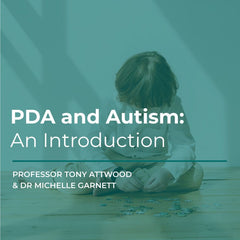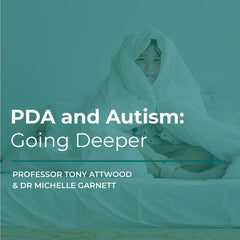Differentiating Pathological Demand Avoidance in Autism from Oppositional Defiant Disorder

In this article, we discuss the distinction between Pathological Demand Avoidance (PDA) (also known as Extreme Demand Avoidance or Persistent Drive for Autonomy) and the behavioural disorder Oppositional Defiant Disorder (ODD). PDA is characterised by an extreme avoidance of everyday demands driven by anxiety, while ODD involves patterns of defiant and aggressive behaviours. Context and Importance
Accurate diagnosis of neurodevelopmental and behavioural conditions is critical for effective therapies and support. Misdiagnosis can lead to inappropriate interventions, exacerbating difficulties for individuals and their families. With overlapping symptoms among conditions like Pathological Demand Avoidance (PDA) and Oppositional Defiant Disorder (ODD), it is essential to delineate these conditions clearly to ensure precise diagnosis and targeted intervention.
Definition of PDA
Pathological Demand Avoidance (PDA) is a profile within the autism spectrum characterised by an extreme avoidance of everyday demands and expectations. High anxiety levels and a need for control drive this avoidance. Individuals with PDA may exhibit social mimicry, a love of role play, sudden mood swings, impulsivity, meltdowns, and a need for novelty and engaging activities. Executive functioning is also affected, meaning that the person’s capacity for managing their attention, time, actions and belongings is less than we would expect for their chronological age. It is a bit like the brain's air traffic control system. In PDA, this system can become overwhelmed by perceived demands, leading to an avoidance response, often starting with distraction but often escalating to either meltdown (which looks like a rage attack) or shutdown (which can range from hiding under the bedcovers to dropping to the floor in a foetal position). When calm, the person shows insight, remorse, and regret for their actions but does not see that they had a choice.
Definition of ODD
Oppositional Defiant Disorder (ODD) is a behavioural disorder marked by a persistent pattern of angry/irritable mood, argumentative/defiant behaviour, and vindictiveness. Individuals with ODD often deliberately annoy others, blame others for their mistakes, and exhibit less anxiety-driven behaviour, such as avoidance, focusing more on oppositional actions such as arguing or deliberately annoying others. ODD behaviours are typically aimed at those in authority, and while the person may also resist demands, their resistance is generally not driven by the same high levels of anxiety seen in PDA, and they do not show the same obsessive level of resistance to demands as seen in PDA. When calm, the person continues to blame others, show defiance and not recognise their own role in the problems that occur with others.
Profile Comparison
PDA Profile in Autism
- Resistance to everyday demands due to anxiety-driven need for control: Individuals with PDA avoid everyday demands, including tasks that they enjoy, due to very powerful underlying anxiety that may or may not be within their awareness. The anxiety is driven by their perception that by following a request, they are losing control of their life/environment.
- Social mimicry and role play: PDA individuals often engage in social mimicry and role play as a strategy to manage social interactions and demands.
- Sudden mood swings and impulsivity: Mood swings and impulsive behaviours are common, driven by the individual's anxiety and need for control.
- Need for novelty and engaging activities: Individuals with PDA often enjoy and seek out novel and highly engaging activities.
Oppositional Defiant Disorder (ODD)
- Persistent pattern of anger, irritability, and defiant behaviour: ODD is characterised by ongoing patterns of angry and defiant behaviours directed at authority figures.
- Deliberate annoyance of others and blaming others for mistakes: Individuals with ODD often intentionally annoy others and refuse to take responsibility for their actions.
- Less driven by anxiety, more by oppositional behaviour: The behaviour in ODD is primarily oppositional and defiant rather than anxiety-driven as in PDA.
Diagnostic Challenges
Overlap in Behaviours
Certain behaviours, such as temper tantrums, irritability, defiance and aggression, are present in both PDA and ODD, complicating the diagnostic process. Both conditions are first diagnosed in childhood and, at a lower degree of severity, may occur within the family home only. A person with ODD or PDA is more likely to have ADHD. It is also possible to have both conditions.
Differentiating Factors
One key factor that helps distinguish PDA from ODD is the role of anxiety in demand avoidance. In PDA there is a pattern of avoidance that usually starts with distraction, including being charming and entertaining, e.g. giving the person who made the request a compliment, and beginning to tell them a very entertaining story. The person with PDA is often socially strategic when a demand is made to ‘buy time” to see if they can manage the request. If the request is beyond them due to their high anxiety, sense of overwhelm or lack of energy, more “oppositional behaviours” are likely to develop, such as ignoring the person, arguing with them, or going into a tantrum.
Another differentiating factor is the person’s level of remorse. A person with PDA may not be able to describe their anxiety to you, but they may feel very distressed at the way they treated you during their demand avoidance. They often can say, “I don’t know why I can’t do it, but I just can’t.” The sense for them is “I can’t”, not “I won’t.” The feeling is not chosen; it is instinctive, a sense of being “wired that way.”.
In ODD, demand-avoiding behaviours reflect oppositional and aggressive feelings that are often driven by a mismatch between the child’s physical and emotional needs and their environment. Personality factors such as disinhibition/lack of constraint and negative emotionality have been found to be associated with ODD.
Another difference is that PDA is currently largely understood to be a part of being neurodivergent, whereas ODD occurs in typically developing children. PDA is an atypical profile of autism, so the person can usually use eye contact and other forms of nonverbal social communication and can use social skills to avoid demands. However, their understanding of neurotypical social communication is superficial, and they struggle to understand other people’s perspectives and to incorporate these into their own social behaviour without mental effort. They often have very different sensory perceptions, which commonly cause them to feel overwhelmed by the sensory world. These features of differences in social communication and sensory perception are not part of the ODD profile.
If PDA is misdiagnosed as ODD:
- Inappropriate use of strategies may increase anxiety and avoidance behaviours.
- Failure to address underlying anxiety could lead to a deterioration in the person’s mental health and, therefore, their capacity to cope.
- Autism may be missed, leading to a lack of understanding of the person, and environmental modifications that could be helpful being omitted.
- Educational approaches might be too demanding, potentially leading to school refusal.
If ODD is misdiagnosed as PDA:
- Overly accommodating approaches might accidentally reinforce oppositional behaviours.
- Underlying issues with anger management might be overlooked and, therefore, not treated.
- Family dynamics could be misinterpreted, leading to coaching ineffective parenting strategies.
Summary of Key Points
- PDA and ODD share some surface similarities and have distinct underlying causes and manifestations.
- Accurate diagnosis is crucial for implementing effective interventions and support strategies.
- PDA is primarily driven by anxiety and a need for control, while ODD is characterised by defiance and aggression towards authority.
- Misdiagnosis can lead to inappropriate interventions, potentially exacerbating difficulties for individuals and their families.
- Ongoing research enhances our understanding of these conditions, emphasising the need for tailored approaches in clinical and educational settings.
- Awareness of these distinctions is vital for professionals, caregivers, and individuals to ensure appropriate support and positive outcomes.
Where to from here?
We created two half-day presentations exploring PDA in children, adolescents and adults, both of which are available online on demand. The introductory session gives an update on research, understanding of PDA, and discussion of strategies. The second session assumes knowledge from the first session and goes deeper into strategies at home, school, work and in therapy. Professionals, parents, carers, and adults with PDA will benefit.
References
O’Nions, E., & Eaton, J. (2020). Extreme/‘pathological’ demand avoidance: an overview. Paediatrics and Child Health, 30(12), 411-415.
Newson, E., Le Maréchal, K., & David, C. (2003). Pathological demand avoidance syndrome: a necessary distinction within the pervasive developmental disorders. Archives of Disease in Childhood, 88(7), 595-600.
Gillberg, C., Gillberg, I. C., Thompson, L., Biskupsto, R., & Billstedt, E. (2015). Extreme (“pathological”) demand avoidance in autism: a general population study in the Faroe Islands. European Child & Adolescent Psychiatry, 24(8), 979-984.
Eaton, J., & Weaver, K. (2020). An exploration of the Pathological (or Extreme) Demand Avoidant profile in children referred for an autism diagnostic assessment using data from ADOS-2 assessments and from their developmental histories. Good Autism Practice.
Cavanagh, M., Quinn, D., Duncan, D., Graham, T., & Balbuena, L. (2017). Oppositional Defiant Disorder Is Better Conceptualized as a Disorder of Emotional Regulation. Journal of Attention Disorders, 21(5), 381–389. https://doi.org/10.1177/1087054713520221


